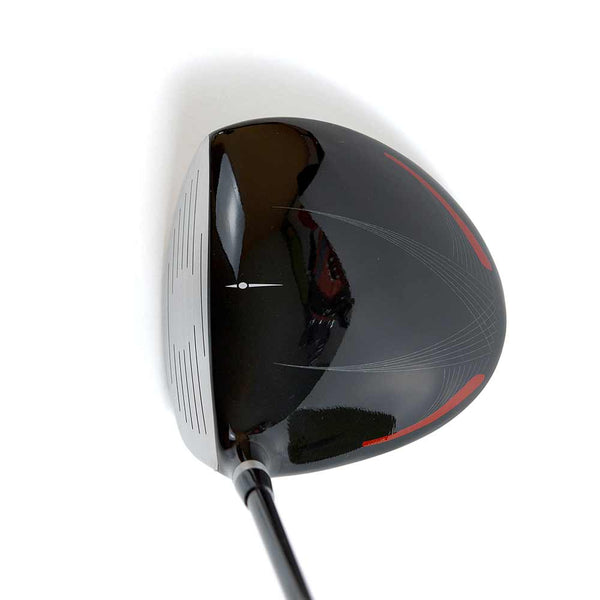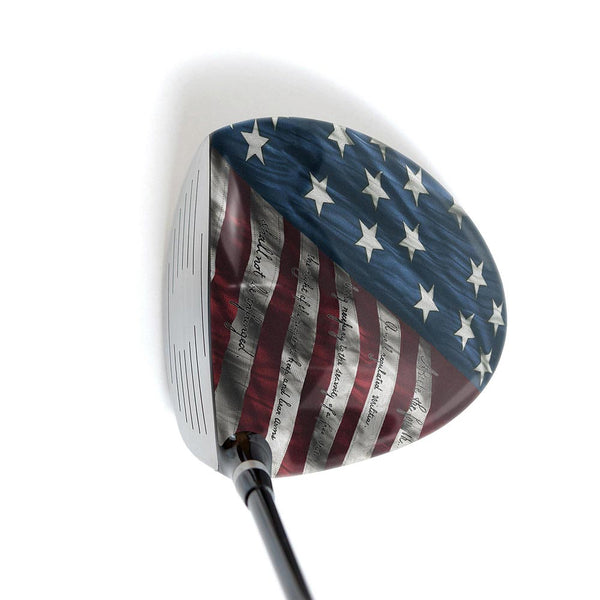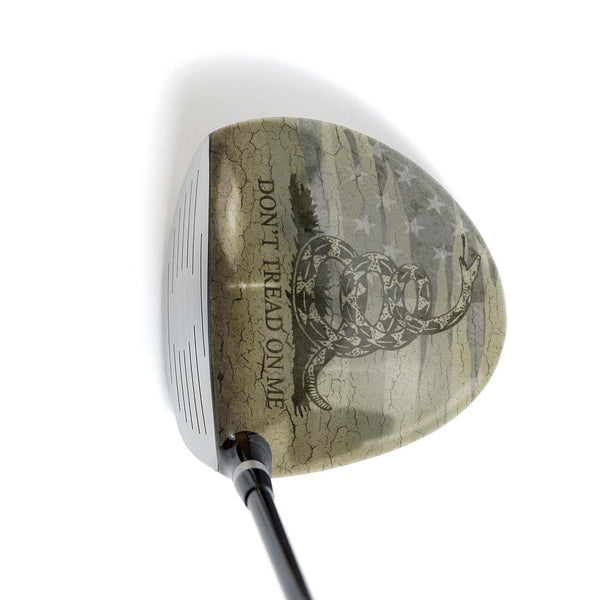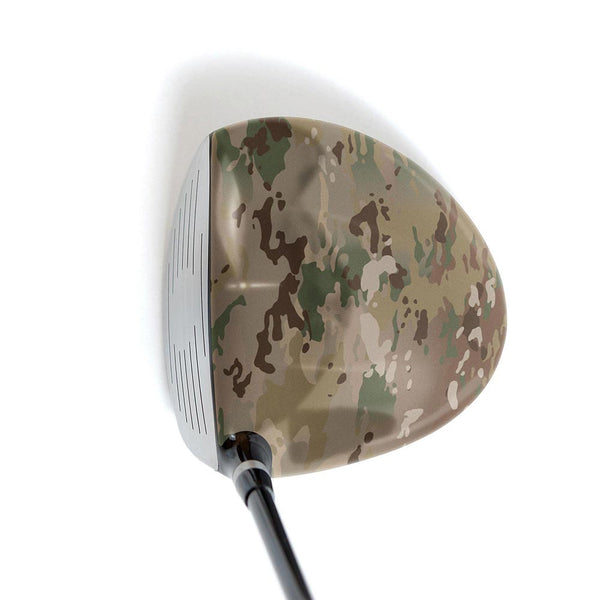Golf Terminology Explained: A Complete Glossary for New Players

Golf is one of those sports that seems simple—until you start talking about it. Words like “birdie,” “fade,” and “bogey” get tossed around like everyone’s supposed to know what they mean. If you’re new to the game, it can feel like you’re listening in on another language. To avoid giving the other players the dreaded blank stare of confusion, allow us to explain golf terminology —offering a no-fluff glossary built to help beginners sound like pros before they even tee off.
Here at ParSkins, we know that style and confidence go hand in hand. Whether you’re wrapping your driver in a sleek new Driver Skin or just trying to fit in at the clubhouse, understanding the language of golf makes every round smoother. So grab your clubs (and maybe a roll of vinyl), and let’s get fluent in golf talk.
Golf Lingo Explained
The game of golf is filled with its own words, phrases, and abbreviations—each with a specific meaning tied to how the game is played or scored. Learning them isn’t just about sounding like a golfer; it helps you understand strategy, communicate on the course, and follow along when others talk about their game.

Think of this as your golf glossary, written in plain English.
Important Golf Terminology for Beginners
Below is a list of common golf terms every new player should know. These are the building blocks of the sport—terms you’ll hear in every round, lesson, or pro tournament broadcast.
1. Par
Par is the number of strokes an expert golfer is expected to take to complete a hole. Every hole has a par rating—usually 3, 4, or 5—based on its length and difficulty.
2. Birdie
One stroke under par. If you make a “birdie” on a par 4, that means you finished the hole in 3 shots.
3. Bogey
One stroke over par. If you hit 5 on a par 4, that’s a bogey. Double bogey means two strokes over par.
4. Eagle
Two strokes under par. Rare, but glorious. Usually happens on a par 5 with a great drive and an even better second shot.
5. Drive
The first shot you take on a hole, typically taken using a driver. (Our recommendation, one wrapped in a Driver Skin to look extra sharp.)

6. Fairway
The neatly cut grass between the tee box and the green—the main area you’re aiming for after your drive.
7. Green
The smooth, short-grass area around the hole where you putt. It’s where every golfer either redeems or ruins their round.
8. Rough
The taller grass lining the fairway. It’s meant to punish missed shots, and it does the job well.
9. Handicap
A numerical measure of a golfer’s skill. It levels the playing field so players of different abilities can compete fairly.
10. Putt
A short, controlled stroke on the green using a putter. Precision matters more than power here.
11. Fade
A controlled shot that curves slightly from left to right (for a right-handed golfer).
12. Draw
The opposite of a fade—a controlled shot that curves slightly from right to left.
13. Slice
An exaggerated fade. Uncontrolled, unplanned, and usually not fun. Most beginners know this one all too well.
14. Hook
An exaggerated draw that curves hard left (for right-handed players). Another term that often leads to lost balls.
15. Mulligan
An unofficial “do-over” shot, usually granted among friends in casual rounds. Don’t expect this kindness in tournaments.
16. Sand Trap (Bunker)
A hazard filled with sand, usually near the green or fairway. Escaping cleanly takes practice—and patience.
17. Tee Box
The starting area of each hole, where you take your first shot.
18. Stroke
Every swing that counts toward your score, including penalty strokes.
19. Fore!
A warning shout used to alert others that a golf ball might be heading their way. Always yell it if you think your shot is going off course.
20. Club Face
The front surface of your golf club—the part that actually makes contact with the ball.

21. Lie
How and where the ball rests on the ground—flat, in the rough, on a slope, etc.
22. Chip Shot
A short shot from near the green that pops the ball into the air before it rolls toward the hole.
23. Divot
The chunk of grass you take out of the ground during a swing. Always replace or repair your divot—it’s golf etiquette 101.
24. Albatross
A rare and beautiful thing—three strokes under par on a single hole.
25. Dogleg
A hole that bends left or right, forcing players to plan their shots around the curve.
How to Talk the Talk
Once you've memorized these "golf terms for beginners", it’s time to start using them. Here are a few examples to make it stick:
- “That drive was pure—straight down the fairway.”
- “I had a rough lie, so I just chipped out and saved par.”
- “Missed my birdie putt, tapped in for par.”
- “Took a mulligan on that first tee shot—it went straight into the water.”
- “My fade turned into a full-on slice… guess I need to spend more time on the range.”

You’ll sound natural on the course in no time.
Bonus: Golf Slang You’ll Hear on the Course
The beauty of golf is that every group has its own dialect. Here are a few fun, unofficial golf terms you’ll hear once you start playing regularly:
- “Duck Hook” – A low, hard hook that dives left fast. Usually followed by a sigh.
- “Worm Burner” – A shot that never gets more than a few inches off the ground.
- “Texas Wedge” – Using your putter from off the green instead of chipping.
- “Snowman” – Scoring an 8 on a hole (because of the shape of the number).
- “Lip Out” – When your putt circles the cup but doesn’t drop.
- “Sand Save” – Getting up and down from a bunker for par.
-
“Tin Cup” – Going for an impossible shot just because it looks cool (and often regretting it).
Slang gives the sport character. Every missed shot becomes a story, every perfect drive becomes bragging rights—and if your gear looks good too, even better.
Conclusion
Golf is more than a game—it’s a culture, a language, and for many, a lifestyle. Understanding the lingo helps you step into that world with confidence, whether you’re a beginner learning your first putt or a DIY’er customizing your gear.
And if you want to take that confidence up a notch, consider giving your clubs a personalized look! ParSkins offers high-quality Driver Skins and Fairway Wood Skins, designed to personalize your clubs with bold, durable designs that reflect your personality and passion for the game.
Learn the words, play the game, and make your gear look as good as your swing.
FAQ
Q: Why is learning golf terminology important for beginners?
A: Because it helps you understand the game, communicate clearly, and follow instructions during lessons or play.
A: Because it helps you understand the game, communicate clearly, and follow instructions during lessons or play.
Q: What’s the easiest way to remember golf terms?
A: Use them on the course! The more you play and talk golf, the faster they’ll stick.
A: Use them on the course! The more you play and talk golf, the faster they’ll stick.
Q: Are golf slang terms official?
A: No, but they’re widely used and part of the game’s fun culture.
A: No, but they’re widely used and part of the game’s fun culture.
Q: What’s the difference between a fade and a slice?
A: A fade is a controlled left-to-right shot; a slice is an uncontrolled one that curves too far right.
A: A fade is a controlled left-to-right shot; a slice is an uncontrolled one that curves too far right.
Q: Where can I customize my golf gear?
A: Visit ParSkins for high-quality Golf Club Wraps designed for golfers who want to stand out.
A: Visit ParSkins for high-quality Golf Club Wraps designed for golfers who want to stand out.









0 comments